Science Is Too Important to Sacrifice for Test Prep
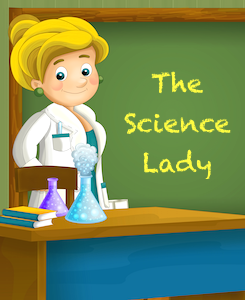
These were just a few of my thoughts back in those days, and there were nowhere near as many assessments as we have now.
This post was sparked by two comments made to me by middle grades teachers during the recent testing season. They were from different grade levels, but both had students who were being assessed in ELA and mathematics. One teacher also had students being assessed in science. Both felt the need to put multi-dimensional science instruction on hold for test prep.
Although most of this post will focus on science, the thoughts, concerns and questions I share would be very similar and applicable to any discipline.
Test Prep Is Part of the Culture
I have spent a lot of time working with and coaching AMAZING teachers and students over my career – and never more so than this year. I have been in many classrooms (including one of my own this year, when I filled in), and I know the story I am about to share happens in classrooms everywhere.
I was attending a planning session, figuring out how I would support an upper elementary team in an upcoming science unit, when one of the teachers said: “We need to be done with this science unit by (a certain date) because we need to begin prepping for ELA and math assessments.”
My first thought was: I know your students will do well because you are an awesome teacher. Engaging and effective science instruction happens every day in your classroom. And although I am not always in the room, I know it also happens in math and ELA.
Then I got defensive in my science-coach mind, thinking “Why does science instruction have to stop for test prep in English and math?”
Upon reflection, I realized these were the “high stakes” tests, and I thought about the pressure the teachers were feeling. I knew it was very real. The culture seemed to be that test preparation was the expected behavior.
I also knew that the district level administration definitely believed that good instruction all year long was enough test preparation. I wondered where the extra pressure was coming from – whether real or perceived.
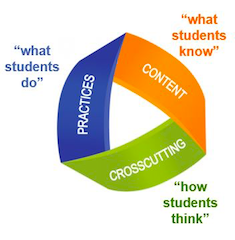
In this story, the class heads outdoors to engage in an authentic learning experience. The students are totally engaged in meaningful science, looking for organisms in the area. They are equipped with hand shovels, insect boxes with magnification, and science notebooks so they can look carefully and sketch/diagram what the different insects look like.
They are talking about bug parts and why they might have that particular body part. Some are comparing worms and grubs, while others are carefully diagramming and labeling ants. The students are engaged in the NGSS “science and engineering practices.” They are thinking and talking about structure and function as well as disciplinary ideas.
This field work is “test prep” for the science assessment to me, but some conversation made it clear that this engaging and memorable learning experience was considered a break from preparation.
Addressing the Test Prep Dilemma
So what are my thoughts about this dilemma? First, a standardized test in any discipline is just a snapshot, a quick look into what students know and are able to do on a particular day at a particular time with particular material.
Large scale assessments are valuable when looking at the big picture – asking how is a state, district or school doing overall? In the case of science, the results provide states, districts and schools a way to think about the curriculum. Most science testing is NOT meant to be “a highly predictive indicator “ of an individual student’s learning (as the three R’s might be).
Indicators of student understanding can and should be found in classrooms all over the country. Formative assessment assists teachers in planning instruction. During instruction formative assessment can be used to determine the students’ thinking around a concept. Reteaching and extensions as needed are facilitated by everyday formative assessment that happens all the time in classrooms.
The example above from the Open Education Resources Commons of three-dimensional formative assessment is found in a slide on the ACESSE Resource A – Introduction to Formative Assessment to Support Equitable 3D Instruction resource. This is an excellent place for digging deep into developing effective formative assessments that mirror the types of items found on standardized tests.
I highly recommend investigating the ACESSE material when thinking about prepping for science standardized testing. Assessment is meant to be seamless, difficult to distinguish from instruction. Formative assessment is one way to make this happen.
Building “Test Prep” into the Curriculum
Do students need to understand what types of questions they will encounter on the test and strategies they might use to best answer the questions? Absolutely. But that doesn’t need to happen on a continuing basis. So what is the solution?
One thought I have is continuing 3-dimensional instruction in the curriculum while making sure that students have the opportunities to answer some of the same types of questions – based around content they are currently learning.
So I did some investigating of sample state tests, and I’m thinking that good instruction includes all the components I see in these test items. (Click to enlarge.)
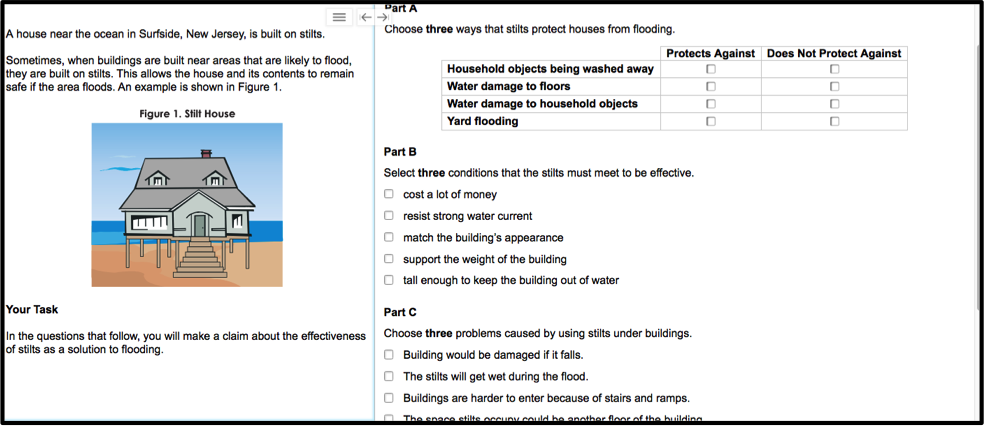
In these items, students are responding to questions in a way that simulates everyday engagement with the three NGSS dimensions of learning.
Real Instruction Is Our Top Priority
I hope some of my mulling and sharing of ideas will assist educators in all disciplines to think about what we can do differently to encourage the continuation of quality instruction during the testing season. How can we shift from the culture of “time stealing” for test prep to a culture that seamlessly blends opportunities to experience test-like items and conditions into the awesome teaching we do every day?
It’s also that time of year when we formally “appreciate” teachers, and I want to say “thank you” to all the teachers who work so hard to develop and implement three-dimensional science learning experiences for their students ALL year long!
Credits: Outdoor science scenes, STEM Teaching Tools; other images, OER Commons.

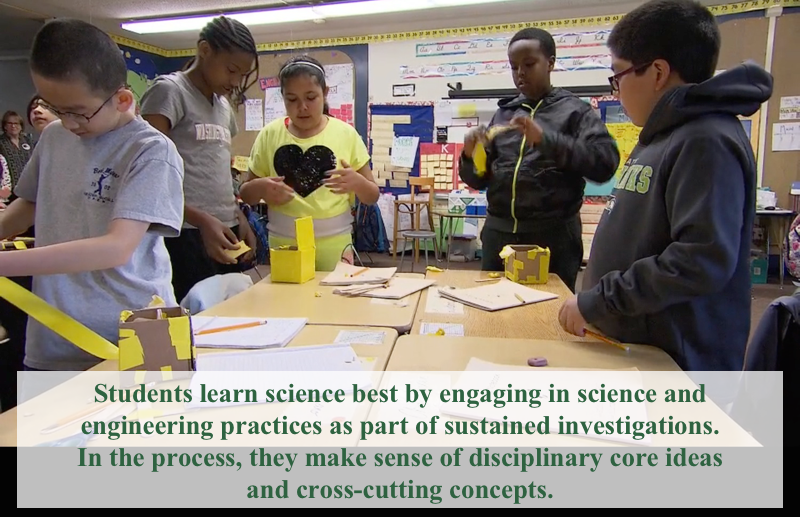

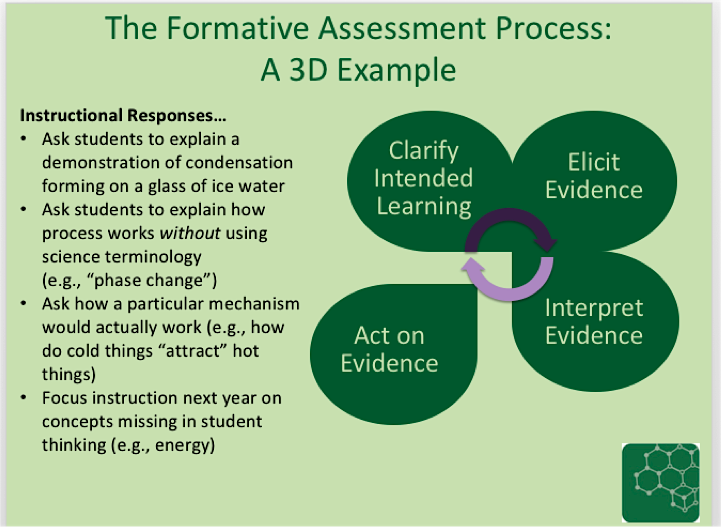
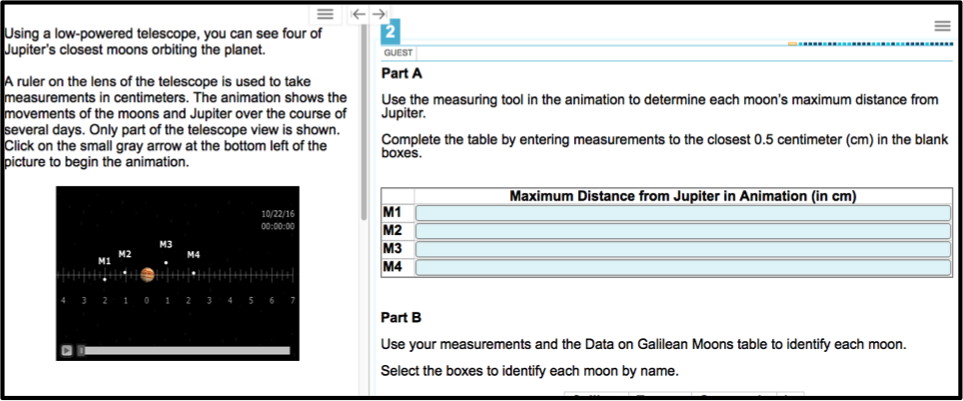


































Great discussion of this vital topic, Kathy! It’s going on my favorites list!
Thanks Anne